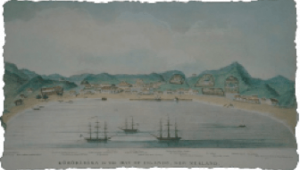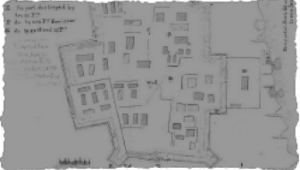
Land (Whenua)



The spiritual world was entwined with the land itself. To the Māori of old, the land is Papatuanuku, the earth-mother goddess who gives birth to plants, animals and people. Some elements of the landscape were the personification of ancestral atua. Mount Manaia, a towering rocky formation at the entrance to the Whangarei Harbour is a good example: the high rocky pinnacles are Manaia and his wives, who were turned to stone during a fight with the servant Paeko. Paeko was also turned to stone, immortalised as a rocky outcrop partway down the side of the mountain.
Māori could not “own” land in the European sense of the word. Each hapū had strong spiritual and physical connections to certain places, the boundaries defined by special landmarks, posts or stones. However, for practical purposes New Zealand was not divided into land parcels with sharply defined boarders. For a start, home kainga were not continuously occupied. People moved with the seasons, from place to place, gathering and harvesting food along the way. Each hapū had rights to certain resources in certain areas, overlapping and entwined with the rights of other hapū. The rights to occupy or use a certain area were held by the group and not by individuals.
Garden plots were very valuable and required a lot of attention. Kainga were built nearby the gardens, and the people returned often in-between their trips away to gather food, visit friends or settle disputes. After two or three years of cropping, the garden plots were left to fallow for several decades. When it was time to move to a different garden area, the kainga was shifted as well. The early European settlers found very difficult to understand the Māori way of moving through the landscape in cycles. In European eyes, lands that were not obviously in use were thought to be abandoned and therefore available.
Moving around within the rohe was a perfectly normal aspect of everyday life. But mobility in Māori society went beyond that. It was fairly common for hapū to migrate and resettle in entirely new lands. A simple population increase was a possible motivating factor. A shortage of gardening land, stretched resources, or defeat in battle could drive a hapū to seek and entirely new place to live. In some cases, the newcomers were welcomed, especially if they were kin to those who lived there already. However, in many cases migrating hapū would expect a fight. Invasions and conquests had serious knock-on effects. A hapū defeated and displaced had to find another place to live, and so the upheaval would spread across many communities.



